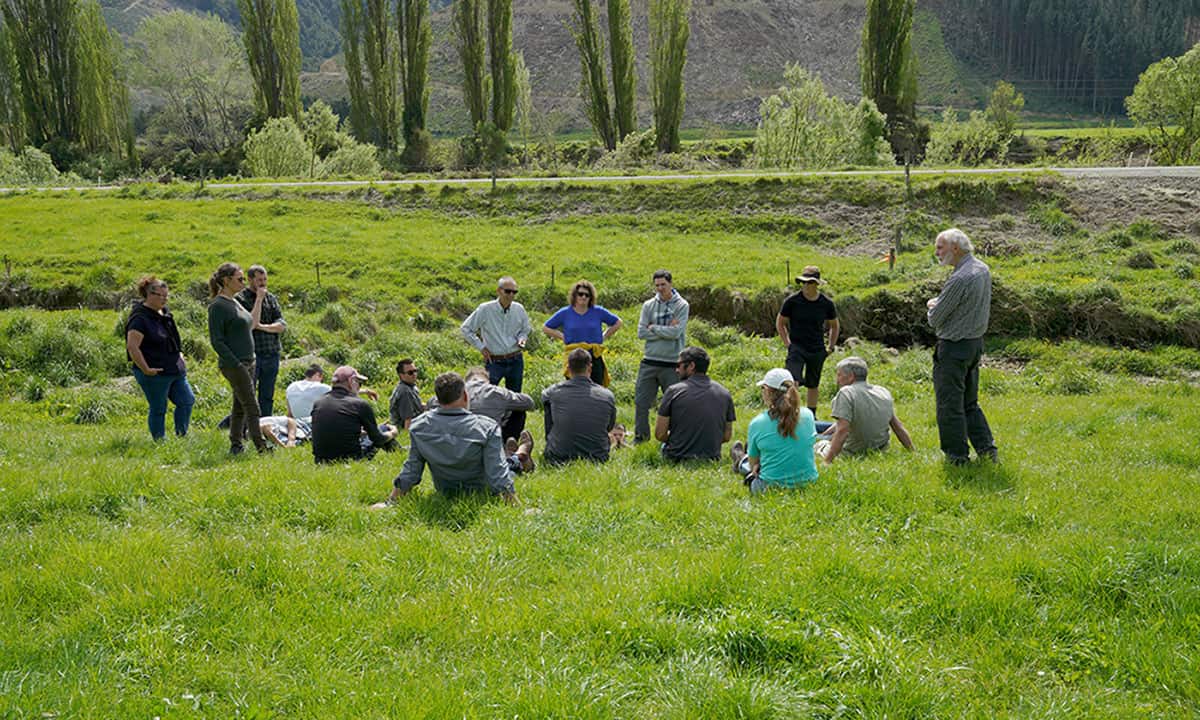Better coordination and communication would unlock potential of catchment groups to improve freshwater health
31 March 2023
Recommendations in a new Cawthron Institute report funded by Our Land and Water National Science Challenge aim to help catchment groups achieve better outcomes from their efforts to improve freshwater health, says its lead author.
“For Aotearoa New Zealand’s catchment groups to realise their potential, both agencies and the groups themselves should re-focus their efforts. We see a need for more support, more targeted policy, better planning and monitoring by groups and stronger relationships with Māori,” says Cawthron Institute Social Science Manager Jim Sinner.
“One of the key factors currently holding catchment groups back is the difference in understanding about what catchment groups can and should do,” Sinner says.
“This leads to mismatched expectations and government policy that fails to encourage and support the type of collective action that is needed.”
But Sinner says there is a great opportunity for everyone’s interests to converge if agencies, catchment groups and tangata whenua could better understand one another’s perspectives and expectations and support each other’s goals.
“If we could do that, there is great scope to work together through catchment groups to improve freshwater health, enable tangata whenua to exercise kaitiakitanga, and to support and recognise farmers for the hard work they have done and continue to do.”
Sinner says hundreds of catchment groups have formed around the country and many are doing good work on riparian planting and pest control. In some places, tangata whenua are working with farmers to realise aspirations such as improving habitat for mahinga kai species.
However, these efforts could be better coordinated.
“We have a lot of farmers doing good things individually, but if they aren’t coordinating their actions, if they aren’t asking what is needed across their catchment to achieve the outcomes the community expects, there is a very real risk that the outcomes will fall short.”
“Agencies tend to think about catchment groups in terms of managing farm runoff to meet water quality standards. But these groups have their own goals and want to find approaches that work on their farms, and they want to be recognised by their local communities as good farmers and good stewards of land and water. Imposing national rules about farming practices sends a message that farmers don’t care and have to be told what to do – that just creates more tension.”
“We would like to see policy that says, if a catchment group is implementing a credible plan to meet community aspirations and water standards, their members will face fewer regulations about specific farming practices, because they’ve got a local solution that will work for their land and waterways.”
“We also see an opportunity for catchment groups to connect farmers and tangata whenua, as they have a lot of values in common. With time and appropriate support, there is potential to form trusting relationships that give effect to Māori aspirations and Te Tiriti and, at the same time, help farmers to regain the confidence of their communities.”
“Hapū and marae communities have a lot of demands on their time and limited resources,” Sinner said, “so it would really help if government would support local kaitiaki to work with farmers, foresters and others through catchment groups.”
The report makes 30 recommendations for catchment groups, agencies and tangata whenua.
Sinner summarises the key recommendations as follows:
- Agencies should support catchment groups’ relationship work e.g. by funding group coordinators and local kaitiaki.
- Catchment groups should develop action plans that address regulatory outcomes alongside the group’s own objectives and tangata whenua aspirations.
- Agencies should design freshwater policy to recognise and reward catchment groups that coordinate members’ actions to achieve catchment-scale outcomes.
- Tangata whenua should consider hosting catchment groups at the local marae to strengthen relationships and explore ways of working together.
View the four-page summary, including the 30 recommendations.

Image: Cawthron Institute. Social scientist Jim Sinner addresses a catchment group.

Jim Sinner, Senior Scientist